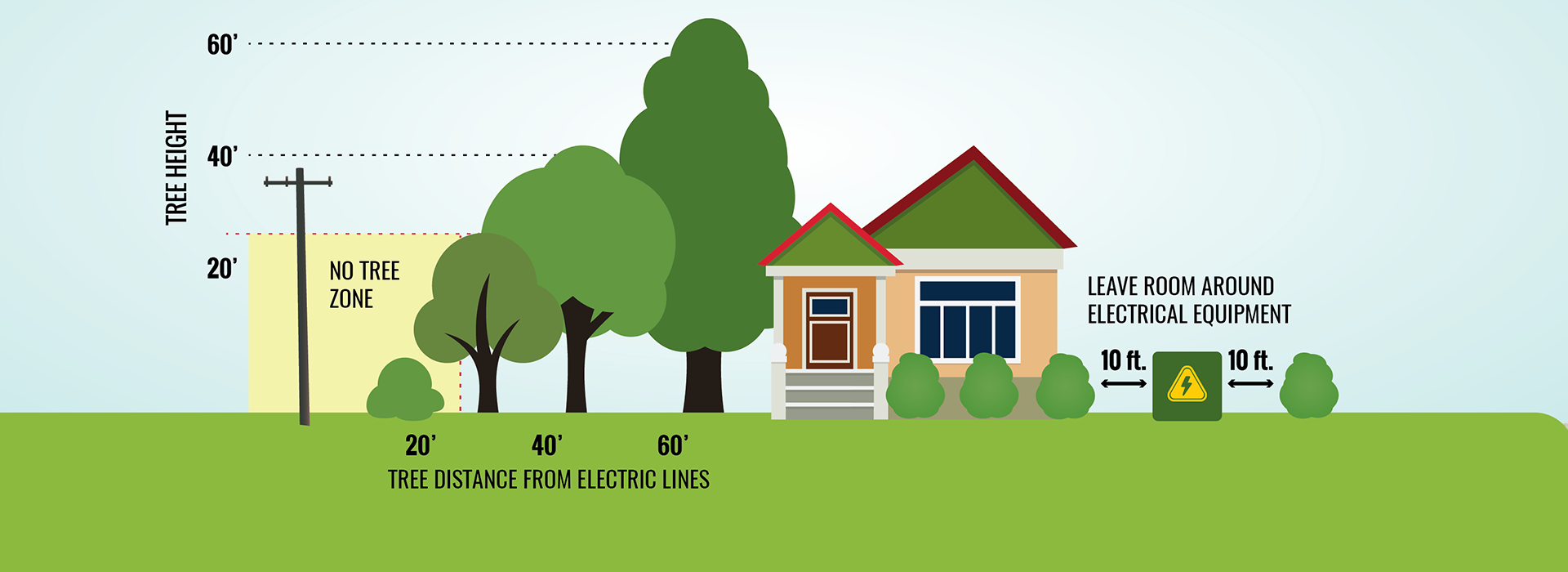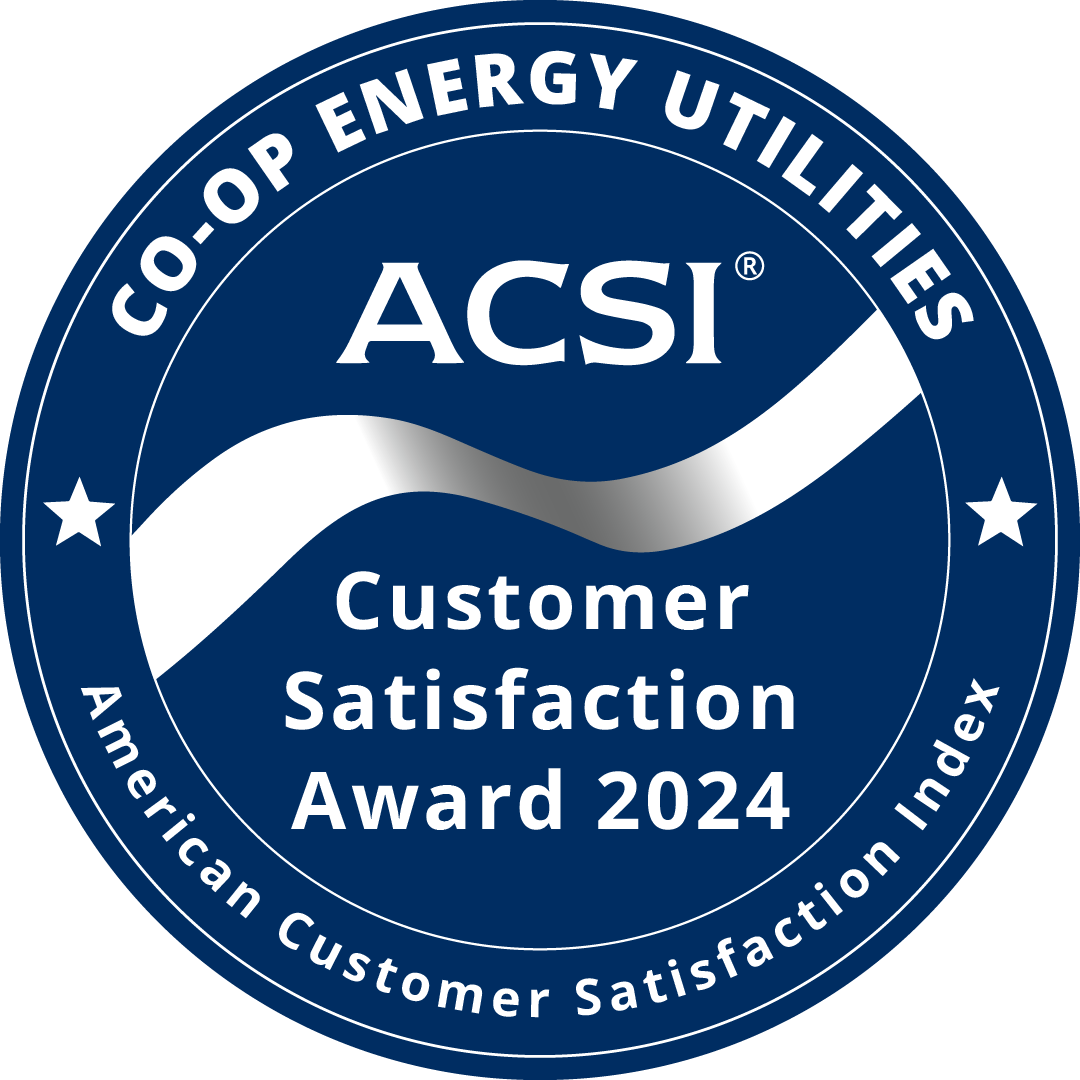Improve Your Property Both Beautifully and Safely
Your yard is your canvas to beautify your property and make it your own. But if you're not aware of what's going on beneath the surface or above your head, you could be walking in to a potentially hazardous situation.
Trees and shrubs are attractive additions to your landscape, but can also create electrical hazards if you don't pay attention to where you plant. Trees and shrubs located too close to overhead power lines or utility equipment can create spark, fire, outage or shock hazards.
Did you know? The ground you walk, drive and play on every day covers an incredible amount of buried utility lines. There's more than one football field's length of buried lines for every man, woman and child in the United States. That means there are more than 20 million miles of underground buried lines.
An underground utility line is damaged once every six minutes nationwide because someone decided to dig without first calling 811. Digging without knowing the approximate location of underground utility lines can result in damage to gas, electric, communications, water and/or sewer lines, and can result in service disruptions, serious injuries and costly repairs.
The information below will help you conduct your yard work and home improvement projects safely to you, your family and your neighbors.
Safe Tree Planting
Trees and shrubs are attractive additions to your landscape, but can also cause electrical hazards if you don't pay attention to where you plant. Trees growing too close to power lines can cause sparks, fires, power outages and shock hazards. Trees and shrubs located too close to utility equipment can cause delays in power restoration and create safety hazards.
To avoid these problems, make sure to give trees and shrubs plenty of room to grow to full size without getting too close to utility equipment.
Safe Tree Planting
-
Consider the size of the tree when fully grown to be sure they won't interfere with power lines.
-
Consider the location of overhead lines and underground equipment when choosing where you plant.
-
Don't plant right next to transformers or your meter and keep these areas clear. This is for your safety and so crews can quickly access equipment when needed.
-
Call 811 at least three days before you plant to have underground lines marked for safe digging.

United Power has an aggressive tree trimming program to reduce the number of tree related outages. However, in some cases the homeowner may be responsible for keeping a line to their home clear. Here is how it works:
- United Power is responsible for trimming around primary lines.
These are lines that run from pole to pole. United Power maintains these lines because they are higher voltage, and require "special handling" from a qualified tree trimming crew. Our tree trimming contractors work to keep trees out of these lines to help us avoid unplanned outages or hazards to our electric system.
- Members are responsible for obstructions in secondary, or "service," lines.
These are typically single lines that stretch from our pole to a member's home — often seen in backyards, crossing from the main electric line to the home. Generally trees that grow into these lines were planted under or adjacent to the line in the homeowner's yard. Any qualified tree trimming crew can handle the necessary work to remove trees from these lines. United Power can assist with the line if a crew needs unobstructed access to the tree.
If you are worried about a tree in a line, or not sure whether trimming is your responsibility, contact United Power at 303-637-1300. We'll be happy to send out a crew to assess the situation. The safety of everyone we serve is our top priority.
Know What's Below. Call 811 Before Your Dig.
Notify your local one-call center by calling 811 or making an online request 2-3 days before work begins. Click here for information about your local one-call center and online service availability. The one-call center will transmit information to affected utility operators.
Wait 2-3 days (varies by state; please click here for state law information) for affected utility operators to respond to your request. On average, between 7-8 utility operators are notified for each request.
Confirm all affected utility operators have responded to your request by comparing the marks to the list of utilities the one-call center notified. State laws vary on the process for confirmation. Please check with your local one-call center for more information.
Respect the marks provided by affected utility operators. These marks are your guide for the duration of your project. If you are unable to maintain the marks during your project, or the project will continue past your request's expiration date, please call 811 to ask for a re-mark.
Dig carefully. If you can't avoid digging near the marks (within 18-24 inches on all sides, depending on state law), consider moving your project to another part of your yard. If you must dig near the marks or use machinery of any kind, please click here to read "The 811 Process for Contractors."


